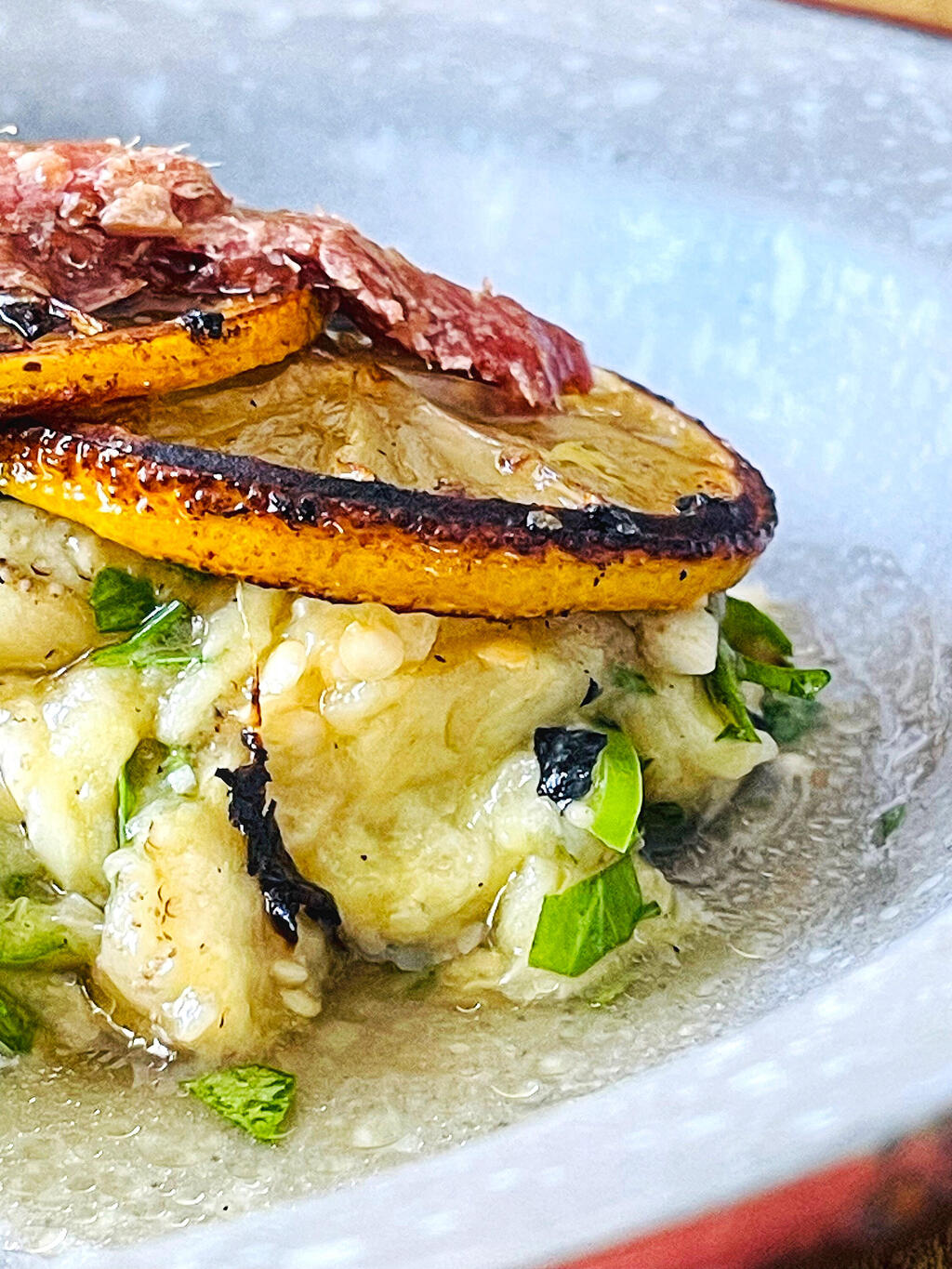Sometimes, it's simply about the movement. The kneading, the glide of a knife, the squeeze of a lemon. One skilled person's motion can be one of the most beautiful things to witness. It doesn't matter what the profession is — a dancer, a chef, a glassblower, a plumber. Professional craftsmen represent a unique category of aesthetics on their own, and surely the world’s chefs know how to summon such moments of perfect motions.
Read more:
In this particular movement with the eggplant, we encountered it in Istanbul, long before the pandemic. A plump man stood in front of a rickety charcoal grill, turning eggplants that sizzled Turkish tunes from the pleasant heat. The strong fire charred the skin and transformed the inside into a soft, velvety texture. The man continued to turn them, taking care to avoid damaging the delicate skin of the eggplant.
When the eggplant was ready, he held it up by the stem, and with a swift movement, he pulled it out, whole, from its skin. We're not sure how, but what is certain - he must have performed this movement tens of thousands of times in his life for the eggplant to turn out so perfect, without a trace of skin clinging to it.
He placed the peeled eggplant on a high-rimmed tin plate, poured olive oil generously from above, quickly halved a lemon and squeezed it, both halves at the same time, one half in each hand, and despite the summer, the lemon was juicy and dripping. Over everything, he generously sprinkled salt and chopped parsley.
He remains vivid in our memory, etched with the beautiful dance he performed there, and we decided to try and recreate some of the taste, scent and beauty of that charred eggplant.
Roasted eggplant with olive oil, garlic and parsley
And yes, there is lemon in it too. But the key here is the precise roasting, preferably over an open flame. How? On the stovetop, on the grill, in a tandoor, over campfire coals. And if none of these are available? That's fine, then in the oven on the broil setting at the highest heat, with lots of patience.
Why is the roasting so important, actually? A whole roasted eggplant, whether with tahini or olive oil, is almost an Israeli cliché. So many places prepare it, and so many prepare it poorly.
The central issue is that Homo sapiens, despite a million wonderful traits, was left by evolution without enough of the patience required to properly roast an eggplant. The skin gets burned, the person gets stressed by the smell of the charring, becomes tired of waiting, and removes the eggplant from the heat about 15 minutes too early. The result is a partially cooked and very wet eggplant flesh with a divisive texture.
You don't dry the eggplant with a sieve; you simply roast it as needed, for about 20 minutes over an open flame. Yes, it takes time. From there, everything else is easy.
Ingredients:
- 1 large Baladi eggplant (a type of eggplant common in the Middle East)
- A heat source and patience
- 3 tablespoons olive oil
- 4 tablespoons freshly squeezed lemon juice
- 3 tablespoons chopped parsley
- 1 large garlic clove, finely chopped (preferably with a knife)
- Optional: a little green hot chili pepper, finely chopped
- Generous amount of coarse or Atlantic salt, or to taste
- Black pepper
Instructions:
- Place the eggplant, with its skin, on the heat source. Roast and char it on one side for about 10 minutes. Carefully turn it to the other side and roast for another 10 minutes.
- Carefully transfer it to a bowl and wait for the eggplant to cool down.
- Use a knife to cut the eggplant in half, and with a spoon, scoop out the flesh and transfer it to a clean bowl. Do not chop it further. If it doesn't fall apart easily, you can use kitchen scissors to cut it into 4 parts. That’s it.
- Add the seasonings, gently mix, taste and adjust according to your preference.
- Serve with fresh challah, pita, or flatbread.
Enjoy your meal!


